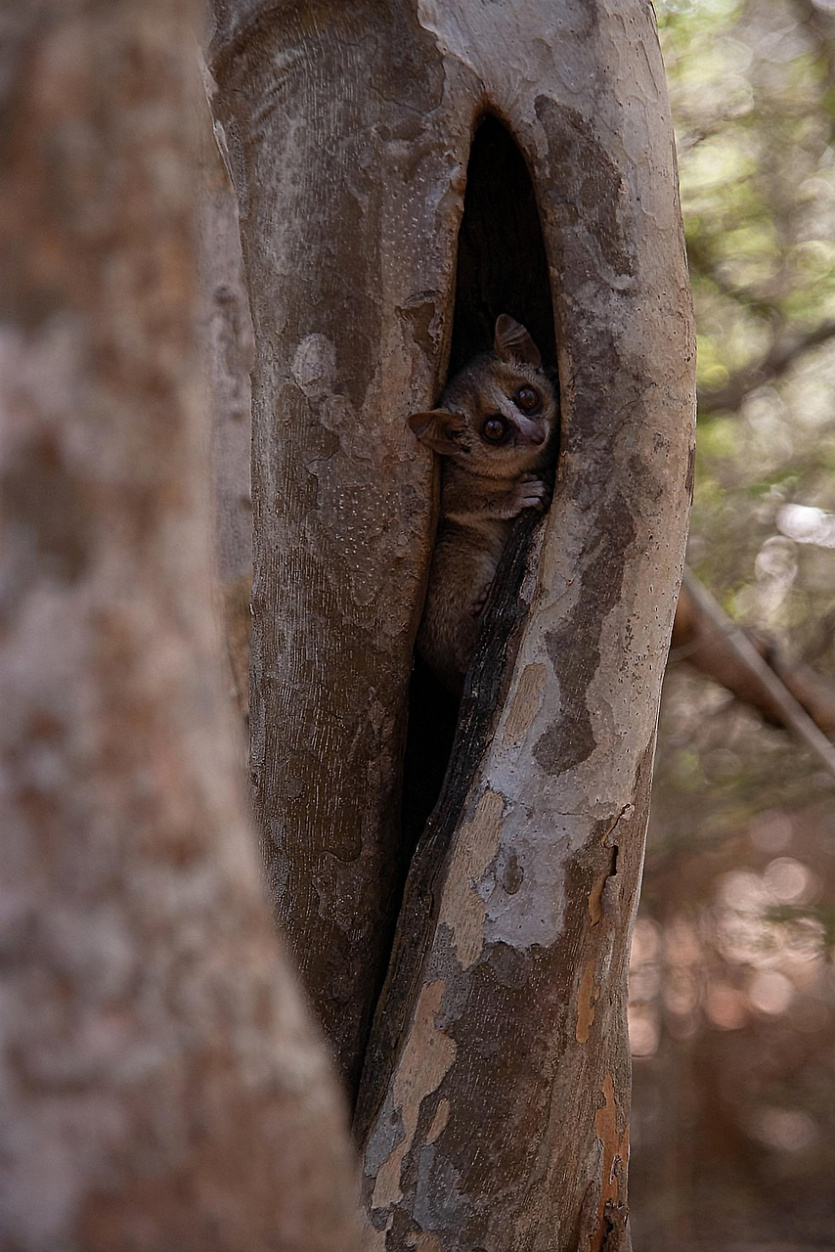
Scientists from the University of Gdańsk have discovered a new species of mite. It is a skin parasite that caused serious symptoms in the head of the Senegal galago. The new species of mite has been named Demodex galagoensis (Izdebska, Rolbiecki et Skomorucha, 2025). It was discovered and described, along with the symptoms of parasitism, by scientists from the Department of Invertebrate Zoology and Parasitology of the Faculty of Biology at the University of Gdańsk, Prof. Leszek Rolbiecki and prof. Joanna N. Izdebska, in cooperation with veterinarian Łukasz Skomorucha.
‘Our team was contacted by Mr Łukasz Skomorucha, who in his practice came across a case of symptoms caused by a mite in a Senegalese galago from a private breeding facility. He asked us to identify the species. The parasite turned out to be a new species for science,’ said dr hab. Leszek Rolbiecki, prof. UG, to Polish Press Agency (PAP).
He explained that his team from the Laboratory of Parasitology and General Zoology has been conducting parasitological research on various groups and species of animals, from wild to domestic and farm animals, for many years.
‘Parasites are common among hosts and often occur asymptomatically. However, they can sometimes cause parasitosis (parasitic diseases) with varying courses, sometimes dangerous and even fatal. Therefore, the research involves cooperation with veterinarians who consult us on the diagnosis and identification of parasites,’ he added.
The latest discovery confirms the possibility of the existence of new, unknown parasites which, under favourable conditions, can multiply excessively in the host, causing disease symptoms.
‘This is particularly true of exotic animals, bred not only in zoos, but increasingly in private breeding as pets, whose parasitofauna is poorly understood,’ explained the biologist.
In his opinion, although the parasite was discovered in a primate, and therefore related to humans, it is probably specific to galagos and should not be dangerous to us.
‘It probably found its way into the animals at the beginning of breeding in an asymptomatic form, but under favourable circumstances, the parasites multiplied and manifested their presence, causing symptoms on the skin of the lemur,’ he added.
He pointed out that if such parasites are transferred to a host of a different species, they are unlikely to be able to live and develop in its skin.
As he emphasised, an allergic reaction can never be ruled out. However, no such cases have been reported to date. During observation, lesions were detected on the galago's head, mainly around the eyes and ear lobes, as well as around the mouth and on the forehead. They took the form of nodular (up to approx. 2 cm) lesions.
‘Treatment consisted of surgical removal/cleaning of the most troublesome lesions, followed by antibiotic therapy and non-steroidal anti-inflammatory drugs,’ explained the expert.
According to prof. Rolbiecki, for effective treatment, but also for prevention, including the assessment of the risk of infection of humans or other animals, it is important to understand the biology of the parasites, their lifestyle and mechanisms of infection.
‘The key to this is correct species identification, which is often only possible by specialists involved in the taxonomic study of a given group,’ he emphasised. He added that current research indicates the important role of cooperation and coordination between veterinary analyses and zoological and parasitological studies.
‘An important element of such discoveries is their contribution to our understanding of biodiversity, a key factor in the functioning of ecosystems, which is one of the most important challenges facing modern science,’ said the biologist. The formal description of the species, together with the characteristics of parasitism and a case report, has been published in the specialist parasitology journal International Journal for Parasitology: Parasites and Wildlife.
Prof. Rolbiecki added that the Laboratory of Parasitology and General Zoology at the University of Gdańsk is the only centre where these mites can be unequivocally identified. ‘We have discovered and described 30 species of mites new to science, including specific parasites of bison, mouflon, polecat, otter, cat, dog, beaver, mole, various rodents and bats,’ he said.
He announced that in September, Gdańsk will host the 27th Congress of the Polish Parasitological Society: ‘It will be an opportunity for parasitologists from various scientific fields to exchange experiences with representatives of professional circles of diagnosticians, medical doctors and veterinarians.

More media information presenting issues related to the University of Gdańsk and research conducted by scientists from the University of Gdańsk can be found in the Subjective Media Review (in Polish). Read here.
Articles selected by Magdalena Nieczuja-Goniszewska, Spokesperson for the University of Gdańsk.
